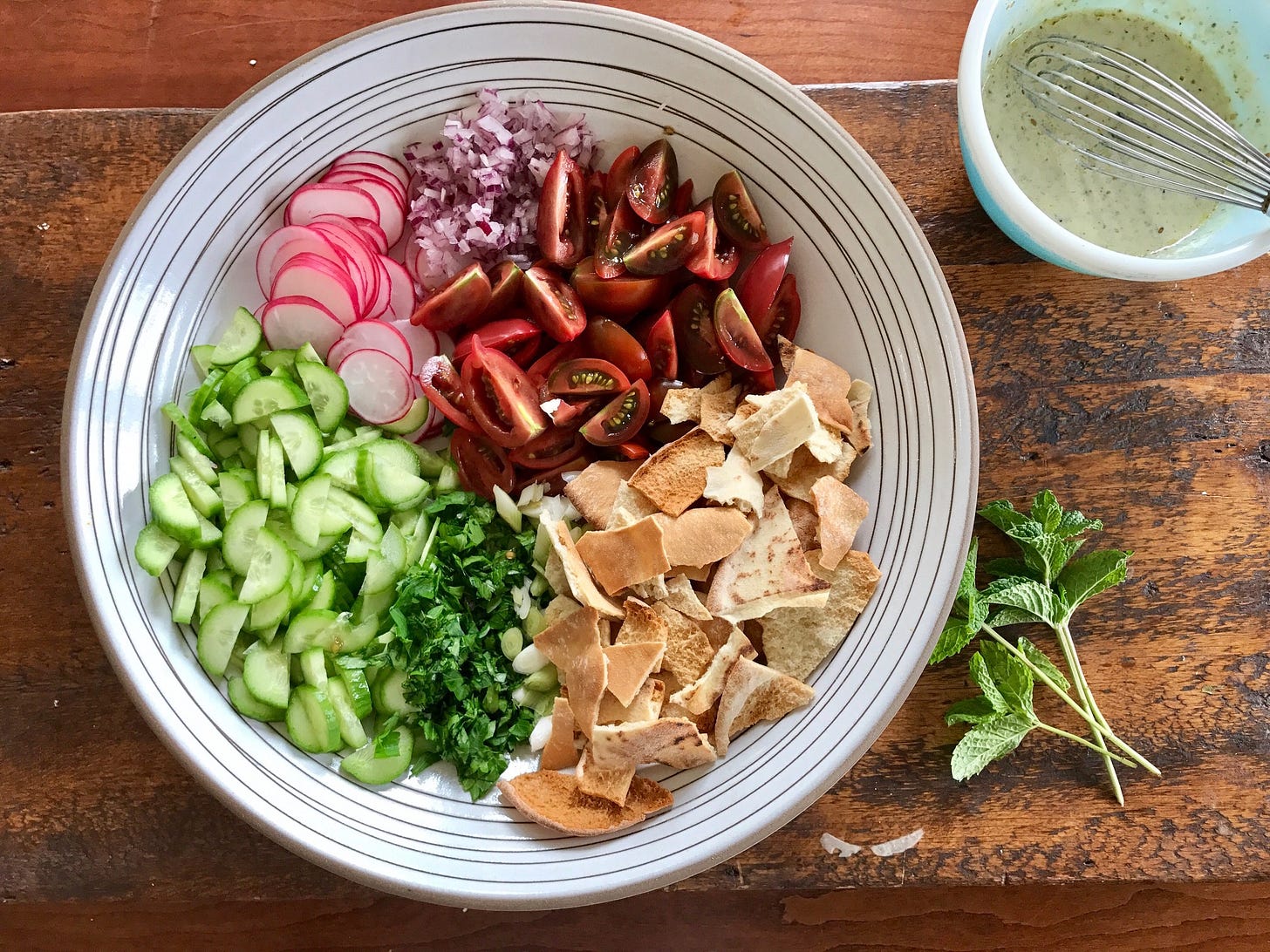Fattoush for the Win

Every year my sister hosts Rosh Hashanah at her house and asks me to bring my kale salad (the one with pomegranates, you guys know it well), and another side. I am only too happy to oblige, especially considering that she is in charge of the brisket and, you know, hosting thirteen of us. The kale salad is a no-brainer, as I've mentioned many times, it's…




